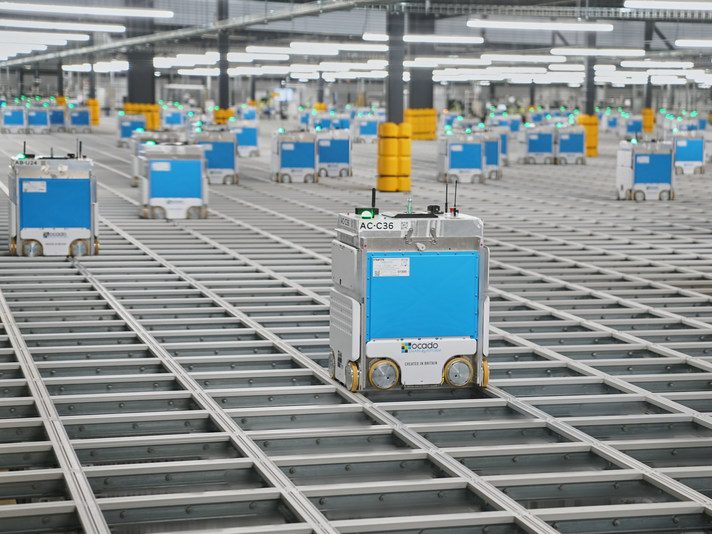Custom building a home is a dream many homeowners share. Being able to design your home exactly to your preferences is an exciting but time-consuming endeavor.
So, how long does it take to build a home? Building a custom home can take as little as a year to upwards of three years. The reason it’s so hard to nail down an average time estimate for completion? The average time for how long it takes to build a house can vary widely due to the scope of the project, weather-related delays, and how readily available supplies and labor are. Getting permits and completing inspections can also extend this timeline if those processes are difficult to schedule.
The Average Time Building a House Takes
The timeline of building a home is influenced by the type of home you choose to build. Custom builds require more build time as they are designed and built to your precise specifications. A non-custom build, on the other hand, is generally faster as it uses pre-designed plans and standard layouts. According to the 2019 Survey of Construction (SOC) from the Census Bureau, it takes around eight months to build a single-family home on average.
How Long Each Type of Home Takes to Build
How long it takes to build a house can vary depending on several factors, including the type of home, the size, the complexity of the design, the availability of labor and materials, and the efficiency of the construction process.
- Prefabricated or modular homes: Workers construct these homes off-site in a factory and then transport the home to the building site for assembly. Typically, you can build prefabricated or modular homes in a shorter time than traditional construction methods. The on-site assembly can take anywhere from a few days to a few weeks, depending on the complexity and size of the home.
- Custom or traditional stick-built homes: A construction team builds this style of home on-site using traditional construction methods, where they assemble the structure piece by piece. Building a custom or stick-built home generally takes longer compared to prefabricated homes. The construction process can take several months to a year, depending on the size and complexity of the home, weather conditions, and availability of labor and materials.
- Production or tract homes: Large-scale builders construct these homes using standardized designs and materials, often in a planned community or subdivision. Production of tract homes is generally efficient, and the building process is relatively quick. Construction timeframes can range from a few months to six months, depending on the home’s size and features.
Are Custom Builds Slower? Why Is This?
Custom-built houses often take longer than buying a pre-designed home in a planned community because of the additional planning and customization required. The project’s scope and unique features, fixtures, and finishes affect how long it takes to complete. Because custom homes are built to the client’s specifications, you may need additional time to finalize plans and design elements. It’s common to see delays during the building process due to design changes or unexpected issues.
Non-Custom Builds May Be Faster Than Custom
If you’re looking to build a house that falls within the standard range of production homes, you can expect the construction process to go much faster. These types of homes often have pre-set plans, limiting your customization. Most homes are still customizable (tile, flooring, and paint colors), but planning is easier since you work within given boundaries.
What You Need to Know Before You Start Building That House
Before embarking on your construction journey, you need to consider several factors. The first thing to decide is the type of home you want to build. Will it be a custom or production home? You should also incorporate your family’s unique needs into your home’s design and layout.
Another crucial detail is the type of lot you’ll build a house on. The terrain and size of the lot can directly impact build time, costs, and even the design and layout of your home. Securing financing and finding the right general contractor for the job should also be taken seriously. Choosing the right contractor is critical to achieving your desired outcome on build time and within budget, so do your due diligence.
Main Issues That Can Impact the Timeline
Numerous issues can impact the timeline of building a custom home, with the weather being one of the most significant to influence construction time. Various permits and authorizations, such as inspection and building permits, can also impact how long it takes to build a home. One way to ensure a smooth timeline is by carefully planning and scheduling each phase of the home-building process.
Saving Time During the Building Process
To save time during the construction of your new home, you first need to have a clear understanding of the next construction timeline itself. Ensure your desired schedule can be accommodated and planned, including any additional time required for permits, inspections, or other issues.
It’s also important to ensure that all materials required for your home are acquired beforehand, ensuring the construction period can continue without interruptions or delays.
Permits and Authorizations: What You Need to Know
To construct a new dream home, you must acquire permits from municipal departments such as the building or zoning department. These permits and authorizations help ensure that building construction adheres to standard building codes, restricting the possibility of home construction defects and related problems.
The Style and Scale of Your New House
The style and size of your new house can significantly impact the timeline of constructing your new home. Larger homes will often take longer to build than smaller homes due to the increased work required and the need to secure many more building materials.
The Timeline of a Typical Home Construction
The actual construction timeline for constructing a typical home can vary depending on the location and complexity of the building plans. Here is a rough construction timeline for building a typical home:
Week 1: Prepping and planning
To kick off a custom build, you must tackle site preparation, obtaining permits, setting up equipment, establishing a construction schedule, and planning the rigorous building process.
Weeks 2-5: Framing and home foundations
Once your contractor is ready to break ground on the home-building project, their team will need to complete the foundation and framing work, including framing the walls and roof of the first-floor plan and house. After framing, a structural inspection ensures all work is up to code.
Weeks 6-7: Mechanical elements
It’s time to get down to basics and start installing plumbing, electrical systems, ductwork, and heating and cooling systems.
Weeks 7-8: Drywall and other insulation
Usually, about seven to eight weeks in, you’ll install insulation to help regulate the temperature inside your home and drywall to close up the interior walls.
Weeks 9-11: Painting and flooring
Prepare for the fun stuff—painting the interior and installing floorings such as tile, hardwood, or carpet.
Weeks 12-13: Exterior elements and finishes
Once you complete a decent chunk of the interior work, it’s time to head outside and install exterior doors and garage doors, building walkways, roofing, and gutters.
Week 14: Finishing off the interior
After you finish the base of the home, the finishing touches occur, like installing cabinetry, appliances, and lighting fixtures.
Week 15: Finishing off your driveways and walkways
About four months in, the build team must complete exterior elements such as your driveway, walkways, and landscaping features.
Week 16: Final finishing touches and clean up
As the project starts to close, it’s necessary to clean up the construction site, check the building site for any remaining issues and ensure everything is up to code.
Week 17: Landscaping and gardening
During week 17, the home builders will start to finalize the exterior appearance of your new home, including planting trees and shrubs.
Week 18: Inspection of the finished home
If all goes well, you’ll complete a final inspection by a municipal inspector to ensure everything in the home is up to code. This is a key step for safety.
Week 19: Final home walkthrough of property
The final home-walk through is a really exciting time in any custom build. The homeowner and builder conduct a final walkthrough to ensure everything is working.
Week 20: Closing on the new home construction
To wrap things up, at about week 20, the homeowner signs documents to complete the home purchase and officially takes ownership.
Some Final Elements to Consider When Building Your New House
Unfortunately, the costs don’t stop once you’re done building the home. You must also plan for mortgage and escrow costs to build a custom home.
Costs, mortgage, and escrow
When it comes to building a new custom house, there are a few final elements to consider to ensure that you are fully prepared for everything the process entails. One of the most important things to keep in mind is the cost of a mortgage. While you may know what you can afford to spend each month, speaking with a mortgage broker or lender is essential before beginning your build to give you a clear idea of your budget and help you avoid surprises. Using a mortgage calculator can make it easier to determine what your monthly payments will look like.
Additionally, it’s important to consider the costs of escrow—the money you will need to set aside for expenses such as property taxes, insurance, and maintenance. Create a separate account for these expenses and contribute a set amount each month to ensure that you are prepared for any unexpected expenses that may arise.
Find an Agent in Minutes
Match with an investor-friendly agent who can help you find, analyze, and close your next deal.
Note By BiggerPockets: These are opinions written by the author and do not necessarily represent the opinions of BiggerPockets.
















